World Premiere: 2010 Toyota Prius

With 700,000 Toyota Prius models currently on the road in the United States, Toyota today launched the third generation of the car that started it all.
The 2010 Prius will get better fuel economy and more power. Incredibly, Toyota has raised the mpg rating from 46 mpg in the current model to 50 mpg in this third generation vehicle. And that’s not 50 mpg highway either, it is the combined figure for city and highway driving.
This was achieved due to several innovations and updates, including the use of a larger 1.8-liter four-cylinder engine and smaller and lighter generator, motor and inverter.
The new engine makes 98hp and the electric addition of 36hp horsepower raises the total to 134hp. Gasoline torque is rated at 105 ft-lbs with 153 electric ft-lbs of torque. Not only does the larger, more powerful engine reduce highway fuel consumption by allowing the engine to rev lower but the added power also increases performance. The new Prius will best the 10.5 second 0-60 mph time of its predecessor with a 9.8 second time.
The 2010 Prius also cuts a clean swath through the air thanks to a 0.25 drag coefficient – the lowest of any production car.
The incredible fuel efficiency rating is also due to some new innovations including a world’s first full electric air conditioning system and full electric water pump.
Yet another world first (the 3rd generation vehicle does hold 1,000 patents) is the solar panel roof. Energy collected from the roof actually powers the air circulation system inside the car when the vehicle is off. This way the cabin is kept cool(er) while sitting in a parking lot on a hot summer day. Not only will the interior then be more comfortable, but the air conditioning system won’t have to work as hard.
Much as the style of the 2010 Prius has been carried over from past models, so has the size. In total the third-generation vehicle gains just on inch in length and width. Still, interior space has been increased by five cubic feet.
Toyota expects to sell 180,000 units in the first year of production in the Unites States with a total production of 400,000 units. The increase in sales worldwide is due to Toyota’s market expansion – the current Prius being available in 44 countries and the upcoming model due to hit dealerships in 80 countries.
Official release after the jump:
TOYOTA REVEALS ALL-NEW PRIUS
DETROIT, January 12, 2009 — Toyota Motor Sales (TMS), U.S.A., Inc.,
unveiled the all-new 50-mile-per gallon rated third-generation Prius hybrid vehicle
today at the 2009 North American International Auto show.
Celebrated as the benchmark for cars of the future, the Prius has
delivered superior fuel economy and ultra-low emissions to more than one million
owners worldwide for more than 10 years.
The midsize third-generation 2010 Prius will offer even better mileage
ratings, enhanced performance, and innovative design features. It will be quieter,
roomier, and equipped with advanced standard and available features such as a
moonroof with solar panels, four driving modes, Intelligent Parking Assist (IPA)
and steering wheel touch controls that display on the instrument panel display.
An Eco-Icon
The first-generation Prius entered the market in 1997 as the world’s first
mass-produced hybrid. The name Prius, “to go before” in Latin, became symbolic
of a car that was launched even before environmental awareness had become a
mainstream social issue.
From the beginning, Toyota’s full-hybrid system was developed in-house
and has become a driving force behind advanced vehicle technology. The
company’s exclusive Hybrid Synergy Drive System was introduced in 2004 on
the second-generation Prius. Since then, more than 670,000 have been sold in
the U.S.
In designing the new, third-generation Prius, Toyota engineers combined
a careful refinement of existing systems with an aggressive measure of new
technology necessary for the future of automobiles.
Fuel Economy and Environmental Performance
The new Prius will be built using processes that reduce pollution in every
stage of vehicle life, from production and driving, through to disposal.
The third-generation Prius extends its record of continuous improvement
in fuel economy. The first-generation Prius, which was rated 41 EPA combined
mpg, was replaced by the current model, which is EPA rated at 46 mpg,
combined city/highway. Using a combination of technologies, fuel efficiency was
increased to an estimated 50 miles per gallon for the new Prius.
A larger and more powerful 1.8-liter Atkinson-cycle, four-cylinder engine
will power the new Prius. Contrary to conventional wisdom, the larger engine
actually helps improve highway mileage. By making more torque, the new engine
can run at lower average rpm on the highway. When operating at lower rpm, the
new engine uses less fuel. Mileage is especially improved in cold-start conditions
and at higher speeds.
Use of an electric water pump and a new exhaust gas recirculation (EGR)
system also contribute to the engine’s efficiency. The 1.8-liter Prius engine is the
first Toyota power plant that requires no belts under the hood for better fuel
economy and less potential maintenance.
A multi-information display panel that monitors fuel and energy
consumption is standard. It provides feedback on the Prius’ efficiency using
three different displays to help the driver acquire economical driving habits.
Unlike most other hybrid vehicles available, Prius has been a “full” hybrid
since introduction. This allows it to run on engine alone, battery alone, or a
combination of both. The system blends the best of parallel hybrid and series
hybrid designs to achieve the ability to operate on the electric mode alone, and to
charge the batteries while the car is running.
The patented Hybrid Synergy Drive system in the 2010 Prius is 90 percent
newly-developed with significant improvements over previous models.
• The transaxle is lighter in weight and reduces torque losses by as much
as 20 percent compared to the previous model.
• The inverter, which converts direct current to alternating current, has a
new direct cooling system to reduce size and weight.
• Taken together, the inverter, motor and transaxle are smaller, and 20
percent lighter.
• A newly developed electronically controlled regenerative braking system
has been adopted, with control logic optimized to enhance regeneration.
The new Prius will offer three alternative driving modes. EV-Drive Mode
allows driving on battery power alone at low speeds for about a mile, if conditions
permit. There is also a Power Mode, which increases sensitivity to throttle input
for a sportier feel, and an Eco Mode, which helps the driver achieve their best
mileage.
Cutting Edge Styling
In designing the new Prius, aerodynamic performance was an important
factor. The goal was to create a beautiful silhouette, while not compromising
function. Designers preserved the dynamic triangle form of the
current model–instantly recognizable as a Prius–but made alterations to the
overall profile, pillar position and angle. The front pillar, extended forward, helps
refine the performance-focusing, shaped form.
The overall height of the Prius is the same, but the roof profile is altered by
moving the top of the roof 3.9 inches to the rear. This emphasizes the wedge
shape, and also allows for enhanced rear headroom and improved
aerodynamics.
The design of the new Prius’ front and rear corners are sharp, sporty and
aerodynamic. Strong side character lines, rising from front to rear, define the
glazed geometric shape. Viewed from the rear, wider rear treads provide a solid,
firmly rooted stance.
Dimensionally, the new Prius has the same wheelbase as the current
generation. Overall length is slightly increased by 0.6 inches, in part by moving
the front cowl forward.
World’s Lowest Cd
The new Prius received more wind tunnel hours of testing than any other
Toyota in history, resulting in the cleanest aerodynamic profile of any mass-
produced vehicle in the world. By focusing on the shape of the body, underfloor,
wheelhouse liner and shape of the wheels, the designers of the new Prius were
able to reduce the coefficient of drag (Cd) value to 0.25, compared to 0.26 for the
previous model. The airflow under the car was studied extensively. Engineers
made changes to the shape of the fender liner, front surface of the underfloor,
and added a fin at the rear floor cover to increase linear stability.
Advanced Equipment For a New Era
An available sliding glass moonroof is packaged with solar panels, located
over the rear seating area, that power a new ventilation system. This solar
ventilation system uses an electrically powered air circulation fan that does not
require engine assist. The system prevents the interior air temperature from
rising while the vehicle is parked, making the cool-down time shorter when the
driver returns to the vehicle, thus reducing the use of air conditioning.
The remote air-conditioning system is the first system in the world to
function on battery-power alone and that can be remotely operated, so the driver
can adjust the interior temperature for comfort before getting in the car.
Reducing the vehicle’s power consumption, available LED (light emitting
diode) lamps are used for low beams and also in the tail and stop lamps. Air
conditioning, a major energy drain, has been re-engineered to increase efficiency
and cool-down performance. In addition, an exhaust heat recirculation system
reduces heat waste by warming engine coolant during cold startup, for improved
performance. It also heats up the passenger cabin more efficiently.
Enhanced Vehicle Performance
The next-generation Prius is built on a new platform, which enables
improved handling stability, quieter operation, and collision safety. The
suspension consists of front struts and a rear intermediate beam design, as
before, but handling stability is advanced by improving the stabilizer layout,
higher caster angle and tuning the bushing characteristics. Disc brakes are now
used on all four corners, replacing the front disc/rear drum brakes in the current
model.
Weight was saved through use of aluminum in the hood, rear hatch, front
suspension axle and brake caliper and super high-tensile steel in the rocker
inner, center pillar, and roof reinforcement. To meet customer expectations for
everyday performance, zero-to-60 acceleration has been improved to 9.8
seconds, more than a second faster, in internal testing.
Better-performing sound insulation, working with improved vibration
damping, has been installed in various locations to reduce road noise.
Functional Interior Is Bigger on the Inside
Proving that small changes add up to big gains, the cargo area of the new
Prius was expanded 0.4 inches in length and 2.2 inches in width by using a new
and an improved layout of the battery cooling unit.
Rear seat legroom is enhanced by a new space-saving contoured front-
seat design.
Viewed from the cockpit, the center cluster smoothly flows from the
instrument panel to the console. Handy storage space has been added under the
shift lever by taking advantage of the shift-by-wire system. Simple, fin-type air
vents are consistent with the cabin’s efficient appearance. Judicious use of silver
accents adds a finished, technical feel.
Touch sensors on the steering wheel switches are designed to reduce
driver eye movement for better concentration on the road. When the driver
touches the audio or info switch located on the steering wheel, a duplicate image
is displayed on the instrument panel, directly in front of the driver. This system,
called Touch Tracer, is the first system in the world to allow steering wheel
controls to read out on the instrument panel.
The ECO indicator on the Multi-Informational Display (MID) provides driver
feedback for lower fuel consumption.
In pursuit of developing various advanced technologies aimed at realizing
sustainable mobility, Toyota will use plant-derived, carbon-neutral plastics in the
2010 Prius. The newly-developed plastics, known as “ecological plastic,” will be
used in the seat cushion foam, cowl side trim, inner and outer scuff plates, and
deck trim cover. Ecological plastic emits less CO2 during a product lifecycle
(from manufacturing to disposal) than plastic made solely from petroleum; it also
helps reduce petroleum use.
Safety Enhancements
The new Prius was designed to comply with class-top level collision safety
performance in each global region of sale, and to accommodate increasingly
strict safety requirements in the future.
In addition to advanced driver and front passenger Supplemental Restraint
System (SRS) airbags front and rear side curtain airbags, driver and passenger
seat-mounted side airbags and knee airbags are standard equipment.
Active headrests are used in both front seats to reduce the possibility of
whiplash in a collision. Anti-lock Brake System (ABS), Electronic Brake
Distribution (EBD), Brake Assist (BA), electronic traction control (TRAC) and
Vehicle Stability Control (VSC) are included with Toyota’s standard Star Safety
System.
Dynamic Radar Cruise Control system, using advanced millimeter wave
radar, is an available option. The system also enables Lane Keep Assist, which
helps the driver stay safely within the lane, and the Pre-Collision System, which
retracts seatbelts and applies the brakes in certain conditions when a crash is
unavoidable.
Next-generation Intelligent Parking Assist features simplified settings to
help guide the car into parking spaces.
A backup monitor, which provides a view of rear obstacles when reverse
is engaged, is available with an optional voice-activated navigation system.
Safety Connect, Toyota’s first safety and security service, will be available a few
months after launch.
The development of the Prius has required applications for over 1,000
patents filed across the world, of which 292 are U.S. applications.
Pricing for the 2010 Prius will be announced shortly before it goes on sale
late spring.
2010 PRUIS PRELIMINARY SPECIFICATIONS
POWERTRAIN
1.8-liter four-cylinder engine with VVT-i
Engine horsepower: 98 hp @ 5,200 rpm
Engine torque: 105 lb-ft @ 4,000 rpm
Electric motor: Permanent magnet synchronous motor
Electric motor power output: 80 hp/153 lb-ft torque
Hybrid system net horsepower: 134 hp
Emission rating: SULEV (with AT-PZEV)
Electronically controlled continuously variable transmission
Drive System: Front-wheel-drive
Hybrid battery pack: Nickel-metal hydride
Estimated fuel economy: 50 mpg (combined)*
DIMENSIONS (inches)
Overall Length: 175.6
Overall Width: 68.7
Overall Height: 58.7
Wheelbase: 106.3
Ground clearance: 5.5
Coefficient of Drag: 0.25
Wheels: 15-inch alloy wheels
17-inch alloy wheels (optional)
Tire Size: 15-inch: 195/65R15
17-inch: 215/45R17 (optional)
Seating Capacity: 5
EPA class rating: Midsize

With AutoGuide from its launch, Colum previously acted as Editor-in-Chief of Modified Luxury & Exotics magazine where he became a certifiable car snob driving supercars like the Koenigsegg CCX and racing down the autobahn in anything over 500 hp. He has won numerous automotive journalism awards including the Best Video Journalism Award in 2014 and 2015 from the Automotive Journalists Association of Canada (AJAC). Colum founded Geared Content Studios, VerticalScope's in-house branded content division and works to find ways to integrate brands organically into content.
More by Colum Wood






















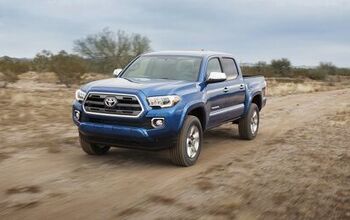



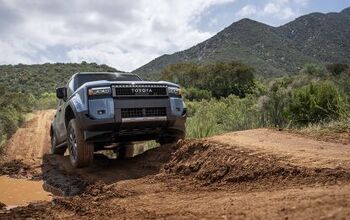

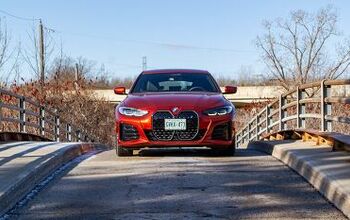
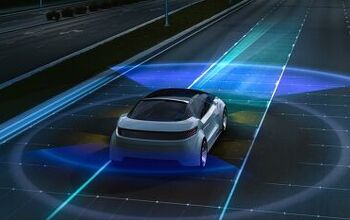


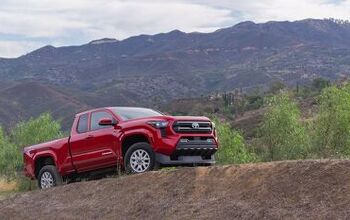


Comments
Join the conversation